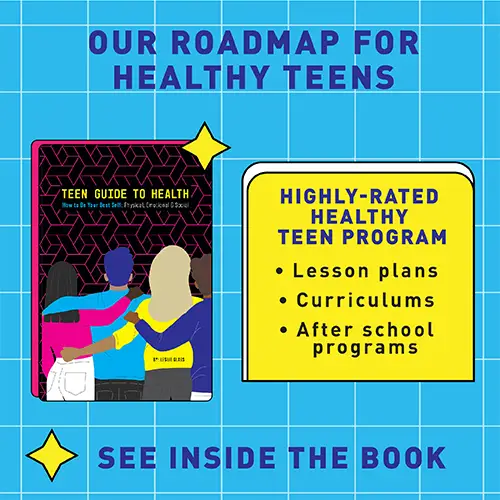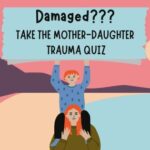Suicide Prevention Resources Save Lives
Suicide prevention resources are necessary because mental health is a crisis for thousands of people right now. The definition of the word suicide as given by the National Institute of Mental Health is “death caused by self-directed injurious behavior with intent to die as a result of the behavior.” It is an incredibly sad and unfortunate consequence of unresolved problems or mental illnesses.
It has been suggested that because of the COVID-19 pandemic, 2020 and 2021 will show an increase in the number of attempted and committed suicides, so access to preventative resources has never been more important.
Suicide Prevention National Statistics
Suicide is currently the 10th leading cause of death in the United States, claiming almost 50,000 lives in 2019. For individuals ages 10-34, it is the second leading cause of death and claims around 14,000 lives each year.
Studies show that in 2019, there were around 12 million US adults who had serious thoughts of committing suicide, and of them, 1.4 million made an attempt on their own lives. The most common method overall was through the use of firearms. Women also had a high occurrence of poisoning. And though men are more likely to follow through with suicide and succeed, women are twice as likely to plan and attempt it.
Risk Factors
There is no one answer as to why a person does or does not follow through with their suicidal thoughts. We can look at increased risks for committing suicide, but there is no one cause and anyone is capable of struggling with those thoughts. Some of the more common indicators are in individuals who struggle with:
- Bipolar Disorder
- Borderline Personality Disorder
- Depression
- Drug or Alcohol Abuse
- Post-Traumatic Stress Disorder
- Schizophrenia
- History of physical, sexual, or emotional abuse
- Serious Financial or Relationship Issues
Studies have indicated that people who attempt suicide are often seeking relief from those conditions with which they struggle. They may be trying to escape feelings of guilt or shame. They may feel burdensome, rejected, or lonely. In cases where assault or abuse has taken place, victims of those crimes may be suffering from intense PTSD that they are trying to escape.
People may also attempt suicide as they get older or if one of their loved ones passes away. There is underlying depression and grief contributing to these thoughts, and without help, it may seem too overwhelming to handle.
Suicide Prevention Warning Signs
Preventing suicide is a cause that every single person should take seriously. There are many different resources out there to help individuals who may be struggling. The problem is that many people don’t know where to turn for help or they feel ashamed to even admit they are struggling. Knowing the signs of suicidal ideation and behavior could help save a life:
- Extreme mood swings
- Feeling hopeless or believing that things will never get better
- Giving away important possessions
- Losing interest in activities they used to enjoy
- Talking about death or dying constantly
- Saying goodbye
- Feeling like a burden to friends and family
- Isolating themselves
If you or someone you know is feeling this way, reaching out for help is critical and an extremely brave thing to do. Though it can be difficult to tell family members or close friends how you are feeling, there are various hotlines and online resources that allow you to keep some form of anonymity.
Crisis Hotlines
The National Suicide Prevention Lifeline: 1-800-273-8255
They are available 24 hours a day, 7 days a week. Calls are free and 100% confidential. They have both English and Spanish speakers on hand at all times and are there to talk to anyone and everyone about how they may be feeling.
SAMHSA’s National Hotline: 1-800-662-4357
Available 24/7
The Friendship Line: 1-800-971-0016
Available 24/7 and intended for individuals aged 60 and older.
National Domestic Violence Hotline: 1-800-799-7233
They are available 24/7 for individuals who are victims of domestic violence and are experiencing thoughts of suicide.
United Way: When you dial 211, you will be connected to crisis centers or counselors close by who can help you.
Suicide Prevention Resources
Suicide Prevention Lifeline: As the website for the National Suicide Prevention Lifeline (1-800-273-8355), they provide information and other resources to those in crisis situations.
American Foundation for Suicide Prevention: This organization provides a community approach to suicide prevention. They have various different resources and provide information for groups and meetings in your local area. You can also text TALK to 741741 for support.
SAMHSA: The Substance Abuse and Mental Health Services Administration is a comprehensive resource that provides information and tools to prevent suicide. They offer information, research, and step-by-step tips on what to do if you are suicidal or if someone you know is.
Suicide Prevention Resource Center: SPRC provides resources, training, local activities and meetings, and support to individuals who might be struggling.
The National Institute of Mental Health: NIMH provides more information resources about suicide and its prevalence. They also provide suicide prevention resources.
NAMI Suicide Prevention Awareness Month: As an organization, they give individuals access to information. You can also text NAMI to 741741 to speak with a trained counselor if you do not want to call the National Suicide Hotline.
Your First Step: Suicide by overdose is a very real issue. Find out more about the leading free overdose prevention resources available today.
CDC #BeThere: Along with information and research about suicide and suicide prevention, the CDC has various resources available as well as an online chat for those who want to speak with someone.
Help Guide: Their suicide prevention resources discuss what potential suicidal ideation looks like in a person, who is at increased risk, and what to do in the event that someone has attempted or committed suicide. They also have information for individuals who may be thinking and planning to attempt and tips for what to do in that situation.
The American Psychiatric Association: This is another great information resource about suicide and prevention. It can be extremely helpful and informative for family members and friends who may suspect potential attempts or thoughts of suicide.
Emotions Anonymous: Based on the principles of 12-step AA meetings, Emotions Anonymous provides similar services to people struggling with suicidal ideation. They offer information, resources, and meetings across the country.
National Association of School Psychologists: This website offers information specifically on how to help a friend who may be struggling or has confided in you that they’ve been having suicidal thoughts. It can be scary when presented with this situation, and many kids don’t know what to do, so this website works to bring those resources forward for friends.
Suicide Awareness Voices of Education: SAVE is an online resource that has a list of ways to decrease the number of suicides, especially amongst younger people. They offer resources for public awareness, education, training, grief support, and research. They also have support resources for those who have attempted suicide and survived.
Suicide Prevention: Getting Help
Whatever the reason for those suicidal thoughts, it is something that can be addressed and treated through professional help. Asking for help is an extremely brave and important thing to do when you are experiencing thoughts or behaviors that may lead to harm or death. Check out Suicide prevention plan.
Author Bio
Mike Smeth is a mental health advocate on a mission to increase access to trustworthy online resources for those in crisis. He enjoys writing for sites like Legal Reader and The Mindful Word and posting recovery-related content on Pinterest and his personal website. You can get in touch with him via Twitter, Facebook, and Instagram.
More Articles To Read
Effects Of Depression In The Body
Know The Suicide Warning Signs
Why You Need A Suicide Prevention Plan
Tips To Manage Chronic Stress and Burnout





















